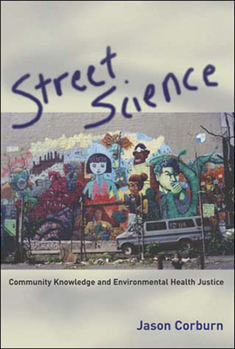Street Science: Community Knowledge and Environmental Health Justice
Select Format
Select Condition 
Book Overview
Like many other low-income urban communities, the Greenpoint/Williamsburg neighborhood of Brooklyn suffers more than its share of environmental problems, with a concentration of polluting facilities and elevated levels of localized air pollutants. Corburn looks at four instances of street science in Greenpoint/Williamsburg, where community members and professionals combined forces to address the risks from subsistence fishing from the polluted East River, the asthma epidemic in the Latino community, childhood lead poisoning, and local sources of air pollution. These episodes highlight both the successes and the limits of street science and demonstrate ways residents can establish their own credibility when working with scientists. Street science, Corburn argues, does not devalue science; it revalues other kinds of information and democratizes the inquiry and decision making processes.
Related Subjects
Administration & Medicine Economics Administration & Policy Earth Sciences Environment Environmental Policy Environmental Science Health Policy Medical Medical Books Political Science Politics & Government Politics & Social Sciences Public Affairs & Policy Public Health Public Policy Science & Math Social Services & Welfare




